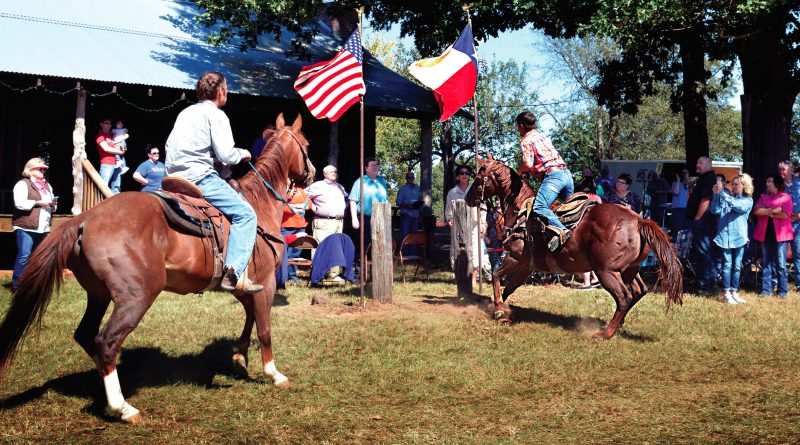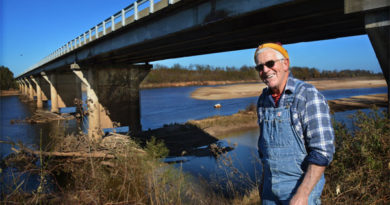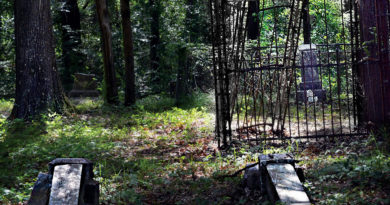Horsemen gather at cavalryman’s family’s reunion
 He was Jose Wales and John Wayne rolled into one, said Roger Mauzey, a descendent who’d come to the Ellis family’s October reunion from Florida to remind the kinsmen who John Riley Ellis had been.
He was Jose Wales and John Wayne rolled into one, said Roger Mauzey, a descendent who’d come to the Ellis family’s October reunion from Florida to remind the kinsmen who John Riley Ellis had been.
A Confederate Cavalryman, he was 19 in December, 1861 when he signed on and later led Company A, the Titus Invincibles, a unit of the Texas Battalion described as “the most dangerous set of men that this war has turned loose upon the world,” in a letter written by Union Major-General W.T. Sherman in 1863 to Washington command.
After sacking and burning Atlanta, with the fall of Vicksburg giving the Union control of the Mississippi and dividing the South, Sherman turned west in pursuit of the Texas Cavalry.Even as he predicted the certainty of the fall of the South, he declared the defeat of the surviving cavalry essential to peace imposed at the point of a sword.
“They are the young bloods of the elite, good billiard players and sportsmen, men who never did work and never will,” Sherman wrote. “War suits them and they are rascals, bold to rashness. They care not for anything but battle and don’t bother their brains about past, present, future or anything beyond good horses and forage. They are splendid riders, first rate shots and utterly reckless. They have left no property or future and therefore cannot be influenced by anything. These men must all be killed or employed by us.
“Whether it is two more years or 20, the interests of the United States demand the continuance of our military role until (they) are dispersed, conquered and subjugated,” Sherman wrote.
Otherwise, he held the South in disdain.
He described the planter class, the plantation owners, as “educated, wealthy and easily approached,” a class that could be managed simply enough, manipulated through their fear of losing power.
The smaller farmers, he said, the majority of the population, “are hardly worth a thought. I confess I have little respect for this class. They are afraid of shadows and submit tamely to dragoons without murmur, allowing us to burn their cotton, take their horses, corn and everything when we reach them. They have been led or driven into war on the false theory that they were to be benefitted somehow and in all things they will blindly follow the lead of the planters.”
The Southerners supporting the Union, he said, were cowards who could be driven “like a pack of curs.” The Texas cavalrymen were another matter.
John Riley rode a Red Roan horse he called “Mark” and a century after Sherman, East Texas writer and historian Ben Green continued building the legend of a soldier whose training for war some say included jousting instruction from a Prussian horseman, a student of the European warfare of fabled knights. The blood of horsemen is tangible in the family line, part of the DNA.
A straight-line descendent and a woman who runs cattle and works horseback, Joyce Gibson bought stock on the Ellis family reunion’s second day for the riderless horse ceremony honoring those passing since the family last gathered. Her mounted sons were the flag bearers posting the Texas and American colors setting a reverent mood even before Bob Arnold offered the stillness of a noon-hour prayer that’s part of an extended ceremony, an annual family ritual.
Dust to dust; while that was going on, a mile up the road from the home he built, John Riley was long-since buried alongside his wife, Margaret Ann Cockran. He was 33 and she was 19 when they married. The war had been over nearly ten years. They had eleven children who lived.
She died of pneumonia two days after giving birth to a daughter in November of 1896. The child died three days later and he buried her where he’d just buried Margaret in the old cemetery at Cooper’s Chapel. He never again married. He lived another 29 years. He died in 1925, two years after a stroke left him paralyzed. He was 83.
Giving second hand account passed on by men who’d known him, Ben Green wrote that John Riley was reported to have said 23 years after the death of his war horse, that time had “erased other things of the past. The events of war, care, family sorrow and trouble makes us forget, but nothing but the coming of the Lord shall take Mark from my memory.”
The way of the war he survived is best understood in the pages of a book, “All Afire to Fight,” said Mr. Mauzey, the historian unable to date to find written documentation of the accounts of John Riley holding to the tail of his swimming horse not once, but twice when they swam the Mississippi under cover of night during the siege of Vicksburg.
Back at the sunny noon-hour Saturday event, while fellow members of the band playing under the oak at the edge of the lawn took a break from their music, Hal Roper came over to lead singing of songs from old yellowed pages of “Sacred Selection” hymnals found at the Cooper’s Chapel church sometime in the 70’s. Once home to its founding Church of Christ congregation, it’s kept up now as the community center.
A camp cook and a cattleman, Odis Cline came from Omaha on Friday, setting up alongside Bill Ellis’s chuck wagon to cook chili over an open fire. Bill Ellis made his chicken stew.
“I’m not a relative, just a friend and a cook,” Mr. Cline said. “I’m famous for baking my Dutch oven cobbler but my higher purpose here is making sure Bill puts chicken in his chicken stew. He’s known to be frugal.”
They cook expecting a crowd of between 50 and 150, their main dish efforts supplemented by covered-dish tradition. Friday evening’s dinner is a soft opening, an informal gathering without structured events except for expectation of dinner on folding tables and pickup tailgates by the old corral.
The traditional reunion wagon train pulls out for a countryside tour Saturday afternoon. For anybody knowing the legend of the wild horses running White Oak bottom, one objective of the wagon drivers is putting hair on the tale.
As the Ellis family resident old timer, it’s the business of Bill Ellis to know where to find the horses. It’s not hard, provided you know where his kinsman Jimmy Ellis, a dirt contractor, has shaped the land at his place falling away into the creek bottom into a mile-long swath of meadow along the edge of the woods. It’s a lush place, a candy land for grazing.
This year they found a group of 17 of them in groomed stand of timber below the hill where the house sits atop the Jimmy Ellis Ranch. Others from the herd’s foundation stock escaping into the wilds 50 years ago range from the vicinity of Mt. Sylvia to Hill Hole, a deep-water landmark on White Oak.
“For ten or 12 miles through there, there just aren’t many fences,” Mr. Ellis said. “There are different groups of horses. I’ve heard one account of a hunter building a stand counting on deer following the horse trails. He counted 60 or more coming through in a morning.”
Otherwise, the horse herd story’s left purposely misty, a matter of rural protocol protecting the memory of an old horseman finding himself bedridden, unable to tend his fences. “His horses just wandered off,” Mr. Ellis said. Sleek and fat, the herd regularly grazing the Jimmy Ellis place is as curious as they are skittish, bolting from the strange arrival of a train of five mule drawn wagons, then circling back to investigate. “We like watching them and it’s fun to watch people seeing them and believing for the first time,” Mr. Ellis said. “They’re aggravating when they slip up to graze in the yard at night and get in the flower beds.”
When John Riley signed on with the Invincibles, he brought his own horse, the single requirement to join with the cavalry riders. Beyond his pay, by an act of the Confederate Congress, he was to draw 40 cents per day for supplying a horse. He was paid the appraised value of his horse at the time of enlistment after it was shot from under him early on in the war. There is some evidence that he was in northeast Arkansas in the fall of 1861 in mounted operations against Indians lending support to the Union, Mr. Mauzey the Florida historian writes. If so, the cavalry returned to Titus County and left again in late February, 1862.
“John Riley was at Pea Ridge in Arkansas, the first of 75 documented engagements in which he fought,” Mr. Mauzey said. Born in 1841 on the Duck River in Tennessee, he came to Texas with his family in a wagon train sometime after 1847 and before being listed on the 1850 Titus County census. They’re not listed in the memoirs of J.H. King as one of 11 families in the “Horse Creek” neighborhood north of Cookville when the King family arrived in 1847.
Picking up John Riley’s trail during war years, he was more than a capable soldier as told in accounts of other members of Company A, where he is described as a “handsome man with a frank, open face, inclined to brightness.” He was elected as “4th Sergeant of Company A in May of 1862. “Some research suggests that his horse Mark might first have belonged to a Union officer John Riley killed in battle,” Mr. Mauzey said. He was wounded twice, shot through the arm and in the leg September 19, 1862, the same day his brother William died in the same battle at Luka, Mississippi.
His name appears on a list of Prisoners of War captured in the battles of Luka, September 19, Corinth, October 3-4, and Hatchie, October 5-6 and subsequently paroled. On April 9, 1865, the Confederate army formally surrendered at Appomattox Court House in Virginia. Done with war, in May John Riley Ellis left the area of Jackson, Mississippi headed home to Texas. He rode into Titus County on July 4. He was thin, changed his family said, wearing a full beard and having grown his hair long.




